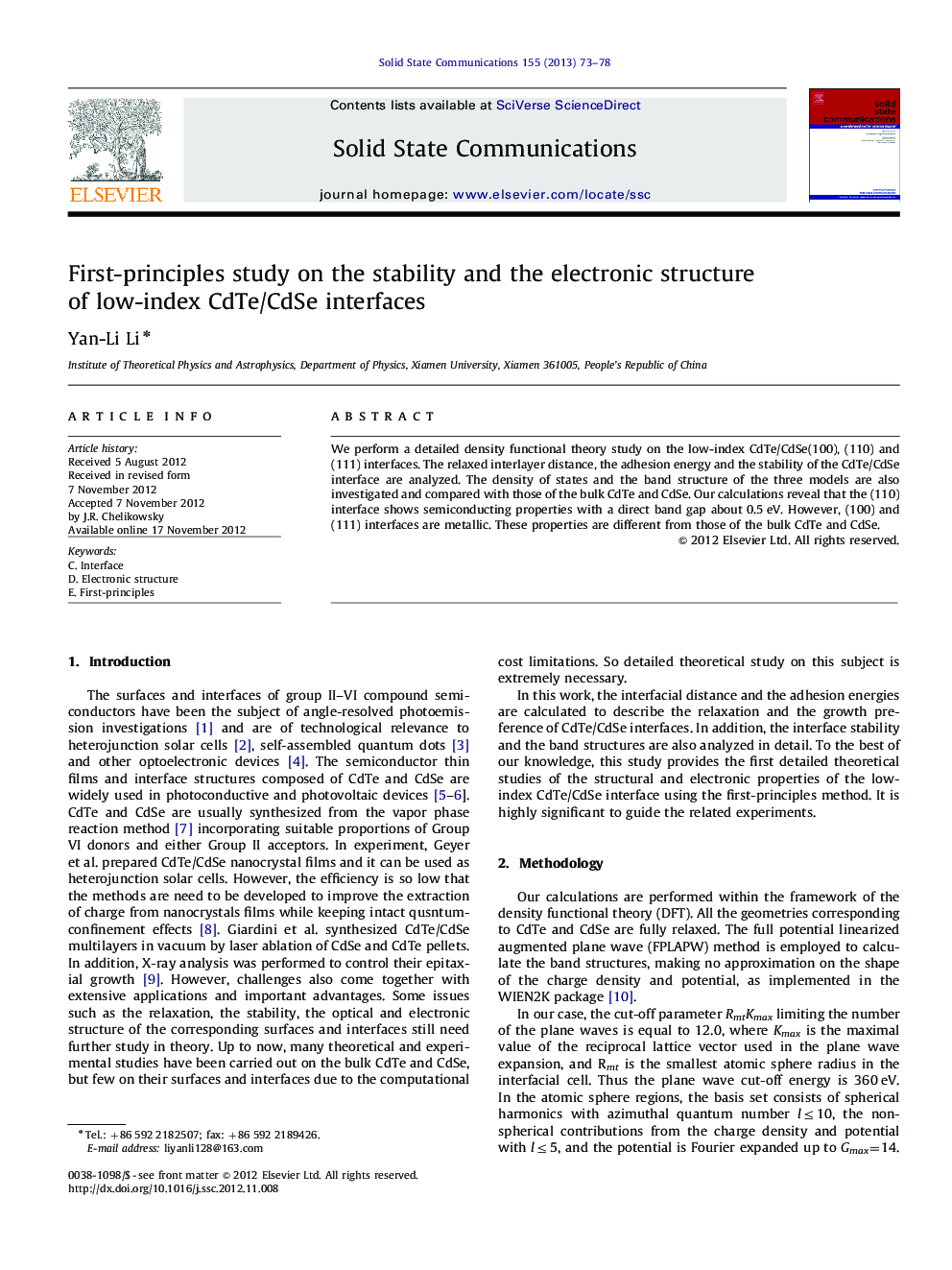| Article ID | Journal | Published Year | Pages | File Type |
|---|---|---|---|---|
| 1592583 | Solid State Communications | 2013 | 6 Pages |
We perform a detailed density functional theory study on the low-index CdTe/CdSe(100), (110) and (111) interfaces. The relaxed interlayer distance, the adhesion energy and the stability of the CdTe/CdSe interface are analyzed. The density of states and the band structure of the three models are also investigated and compared with those of the bulk CdTe and CdSe. Our calculations reveal that the (110) interface shows semiconducting properties with a direct band gap about 0.5 eV. However, (100) and (111) interfaces are metallic. These properties are different from those of the bulk CdTe and CdSe.
► The (100) and (110) slab is the fastest growing and the least favorable direction. ► The (110) and (111) interface is the most stable and the most unstable structure. ► Semiconductor properties of CdTe(CdSe) are destroyed in (100) and (111) interfaces. ► Semiconductor properties of CdTe(CdSe) are maintained in the (110) interface.
